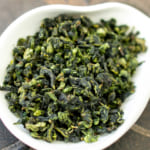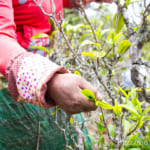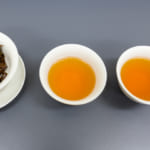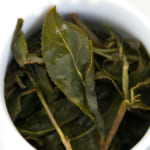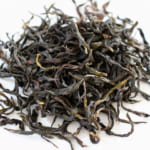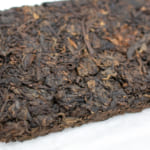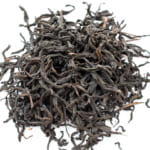- HOME >
- Tea Column
The unexpected reason why the tea with milk is popular
- [2013.09.26] Posted By Akira Hojo
Majority of customers who visit my shop usually drink their tea without the addition of milk and sugar. However, there are quite a number of people who love to drink tea with milk. The tea book often explains that the milk proteins conjugate with the tea tannins and therefore the taste of black tea becomes mellower and less astringent. Others explain that the water in certain places like England is very hard, and therefore, the tea tastes not as good as in straight tea. The concept of adding milk was developed to enjoy a nice cup of tea. Even so, I have totally different point of view for the reason of adding milk into tea.
The calcium in milk produces a tea with stronger body
Tea plucked in early spring has very less dryness or astringency; even if you drink it straight, the tea is of very smooth texture and it gives no disturbance in our mouth. Still many people enjoy drinking spring-plucked tea with milk even after brewing with soft water. The reason why people are comfortable drinking tea with milk has something to do with the calcium content in milk. The calcium has a distinctive function of enhancing the body of tea while at the same time increasing the intensity of its flavor. In Japan, and in Malaysia where my shop is located, generally the water lacks body yet it gives a reasonably strong aftertaste. Thus, when milk is added, the body will be improved and resulting in a tea with a richer taste. This is why people who drink milk tea would spontaneously appreciate it. The flavor becomes obviously stronger if you add milk in a low-end black tea. For your information, the body I was mentioning here does not refer to the thick texture of a tea; but its width, boldness and thickness or richness of the flavor and taste in a tea. With the right practice, you will be able to easily detect the intensity of body with just your nose.
The similarity between milk tea and Hirezake
Do you know a fish called “Fugu”? Fugu is called as Puffer fish in English. This fish is poisonous; yet it is highly appreciated by Japanese and it is one of the most exclusive cuisines in Japan.
http://en.wikipedia.org/wiki/Fugu
In Japan, we have a very strange culture on how we eat Fugu. The sun-dried fin of the Fugu will be baked with strong fire, and then it is served in a glass of Sake (Japanese rice wine). This is called Hirezake. It is said that the Fugu’s fin is able to transform the ordinary Sake into a great quality Sake. It used to be a common practice where people could enjoy a nicer taste of sake despite if lower-end sake was served. Please refer to the following quote from the Wikipedia.
Hirezake – The fins of the fish are dried completely, baked, and served in hot sake, a dish called Hire-zake.
I did try Hirezake, and it really increased the body of the sake. The sake became very rich in taste and it gave a more rounded feeling in my mouth. Hence, I also tried the same attempt using tea. If we put any fish fin into a cup of tea, it will also increase the body and its distinction is very noticeable. The body was improved thanks to the calcium from the fish fin. Therefore, a tea with milk has a lot in common with Hirezake or many other cuisines around the world; especially the soup simmered with fish bone, chicken stock or pork bones. For instance, the Ramen in Japan has great body in their soup thanks to the chicken or pork bones that were cooked together for its soup.
Related Articles
How to get the latest update on HOJO?
1. Follow Twitter, 2. Click "Like" on Facebook, and 3. Subscribe in newsletter. You can have the latest tea news from HOJO.
 Subscribe the Newsletter to enjoy the privileges
Subscribe the Newsletter to enjoy the privileges- You may receive a free sample upon purchase, or you may have the priority to purchase special products. So please remember to subscribe our newsletter as well as the social network.
- New Release of Anxi Traditional Oolong
- Anxi, located in Fujian province, China, is celebrated for its Tie Guan Yin tea. However, the Traditional Anxi …
- New Release of Lan Yun Tie Guan Yin from Anxi
- Lan Yun Tie Guan Yin from Anxi, is not just an ordinary Tie Guan Yin. It has a strikingly delightful flavor re …
NEW ARTICLES
 New Release of Anxi Traditional Oolong
New Release of Anxi Traditional Oolong- Anxi, located in Fujian province, China, is celebrated for its Tie Guan Yin tea. However, the Traditional Anxi …
 Yunnan 2024 Spring Tea Sourcing
Yunnan 2024 Spring Tea Sourcing- Yunnan Province is globally renowned for the exceptional quality of its tea leaves. However, lax production ma …
 The Relationship Between Greenness of Tea Leaves and Fertilizer
The Relationship Between Greenness of Tea Leaves and Fertilizer- For both tea and vegetables, there’s a common misconception that a deeper green colour indicates better …
 Creating Muscatel Black Tea using a Unique Blending Method
Creating Muscatel Black Tea using a Unique Blending Method- I would like to introduce the unique creation of black tea with a distinctive muscatel flavor profile. Acquiri …
 New Release of Lan Yun Tie Guan Yin from Anxi
New Release of Lan Yun Tie Guan Yin from Anxi- Lan Yun Tie Guan Yin from Anxi, is not just an ordinary Tie Guan Yin. It has a strikingly delightful flavor re …
 The Difference Between Fermentation in Tea and Fermented Foods
The Difference Between Fermentation in Tea and Fermented Foods- Black tea and oolong tea are often categorized as “fermented teas,” but the extent to which they u …
 Two New Releases of Phoenix Dan Cong Oolong: Ba Xian King and Single Tree Tea
Two New Releases of Phoenix Dan Cong Oolong: Ba Xian King and Single Tree Tea- We are excited to introduce two highly exclusive Phoenix Dancong Lao Cong teas in our latest release. The feat …
 Easy Way to Prepare Flavorful and Warm Tea at the Workplace
Easy Way to Prepare Flavorful and Warm Tea at the Workplace- Have you ever experienced the transformation of tea stored in a thermos or water bottle at work, turning into …
 The new release of Bao Dao Shan Da Cha Tou Brick 2017, exclusively crafted from Da Cha Tou
The new release of Bao Dao Shan Da Cha Tou Brick 2017, exclusively crafted from Da Cha Tou- Bao Dao Shan Cha Tou Zhuan 2017 is a ripe pu-erh tea crafted into brick form. Bao Dao Shan is the name of the …
 We released Lapsang Suchong Qi Zhong Classic: Premium Lapsang Souchong
We released Lapsang Suchong Qi Zhong Classic: Premium Lapsang Souchong- Lapsang Souchong is one of the earliest known black teas distinguished by a unique production method and flavo …
Category
- New Arrival at HOJO Online Shop
- Featured Articles
- Newsletter
- Types of Tea
- Origin of Tea
- Teapot and Tea Equipment
-
Tea Column
- How to enjoy tea
- Tea Processing
- How to choose quality tea
- Tea constituents and functional effect
- Safety of Tea
- Foods
- Tea Business Operation
- Hobby and Outdoor Activity
- Ranking of Tea
- Video
- FAQ
- Media Release
Profile

- AKIRA HOJO
- I invite you to experience my tea selections.I was born in Nagano, Japan. In university, I studied agricultural chemistry, and I have the master degree in food science. I worked in Japanese food industry for 10 years. I involved in R&D, QC and QA. As a factory manager, I implemented ISO9000 series and managed the factory.
- The Art of Tea Magazine
- We posted the article on “The Art of Tea Magazine No.9, the magazine is published in Taiwan. We featured …
- New Straits Times
- The Malaysian National Newspaper, New Straits Times featured HOJO Tea on 17-Oct-2007.
Shop Info

Address:Lot No. T-215, 3rd Floor, The Gardens Mall, Mid Valley City, Lingkaran Syed Putra, 59200 Kuala Lumpur
Tel: +603-2287-4537
Business Hour: 10am to 10pm





